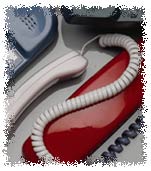


Pronunciation notes: Rules for the change of tones for 一 一 (yī) represents the numeral “one”. When it is spoken alone, or as the last component in a word or a sentence, it is read with its primary tone, the 1st tone. For example: yī, èr, sān one, two, three yī bā bā jiŭ 1888 tŏngyī to unite When it immediately precedes a fourth-tone syllable, it changes from 1st to 2nd tone, and the tone mark reflects the change. For example: Yìdìng surely, certainly Yìxiàr for a while When it immediately precedes a syllable in any tone other than the 4th tone, it changes to 4th tone, and the tone mark reflects the change. For instance: Yì tiān one day Yì nián one year Yì diăn one o’clock Speech Patterns: 1. Numbers: A. Transcribe the following numbers into Pīnyīn. Click to see if you are right. 1. 26 2. 32 3. 17 4.55 5.70 6.81 7.46 8.93 9. 100 10.38 key: 1. èrshíliù 2. Sánshíèr 3. Shíqī 4. Wŭshíwŭ 5. Qīshí 6. báshíyī 7. Sìshíliù 8. Jiŭshísān 9. Yìbăi 10. Sánshíbā B. Transcribe the following sentences into characters, then translate the tongue twister into English. Click to see if you are right. Shí shì shí. Sì shí sì. Shísì bú shì sìshí. Sìshí bú shì shísì. Key: 十是十,四是四。十四不是四十,四十不是十四。 Key: Ten is ten. Four is four. Fourteen is not forty, forty is not fourteen. 2. Tag question 好吗 1. 我们去宿舍找他,好吗? 好。可是你知道他的宿舍在哪儿吗? 2. 我的书不在这儿。我用一下你的书,好吗? 3. 这儿的茶不好。我们喝咖啡,好吗?对不起,我不喝咖啡。 4. 妈妈,现在我看电视,好吗?不行。为什么呢?不为什么。 5. 我们去他那儿玩儿,好吗?不行,不行。他那儿很脏。 1. Wŏmen qù sùshè zhăo tā, hăo ma? Hăo. Kĕshì nĭ zhīdào tāde sùshè zài năr ma? 2. Wŏde shū bú zài zhèr. Wŏ yòng yìxiàr nĭde shū, hăo ma? 3. Zhèr de chá bù hăo. Wŏmen hē kāfēi, hăo ma? Duìbùqĭ, wŏ bù hē Kāfēi. 4. Máma, xiànzài wŏ kàn diànshì, hăo ma? Bù xìng. Wèishénme ne? Bú wèishénme. 5. Wŏmen qù tā nàr wánr, hăo ma? Bù xìng, bù xìng. Tā nàr hĕn zāng. 1. Let’s go to the dorm to look for him, OK? OK. But, do you know where his dorm is? 2. My book is not here. May use your book for a while? 3. The tea here is not good. Let’s drink coffee. Sorry. I don’t drink coffee. 4. Mom, can I watch TV now? No. Why? No reason. 5. Let’s go to his place for a visit, OK? NO, no. His place is very dirty. 3. The expression 一下: 1. 你现在用电话吗?我用一下,好吗? 2. 长江在哪儿呢?我也不知道。看一下地图吧。 3. 妈妈,我的汉语书在哪儿呢?妈妈也不知道。你找一下,好吗? 4. 王老师也在她哪儿吗?我不知道。你去看一下,好吗? 5. 这茶不好。真的吗?我喝一下.....真的,这茶不好。 1. Nĭ xiànzài yòng diànhuà ma? Wŏ yòng yìxià, hăo ma? 2. Chángjiāng zài năr ne? Wŏ yĕ bù zhīdào. Nĭ zhăo yìxià, hăo ma? 3. Māma, wŏde Hànyŭ shū zài năr ne? Māma yĕ bù zhīdào. Nĭ zhăo yīxiàr, hăo ma? 4. Wáng lăoshī yĕ zài tā nàr ma? Wŏ bù zhīdào. Nĭ qù kàn yīxià, hăo ma? 5. Zhè chá bù hăo. Zhēnde ma? Wŏ hē yìxià....zhēnde, zhè chá bù hăo. 1. Are you using the phone now? May I use it? 2. Where is the Yangzte River? I don’t know, either. Let’s take a look at the map, OK? 3. Mom, where is my Chinese book? I don’t know, either. Can you look for it? 4. Is Teacher Wang also at her place? I don’t know. Go and take a look, OK? 5. This tea is not good. Really? Let me try?True, the tea is not good.